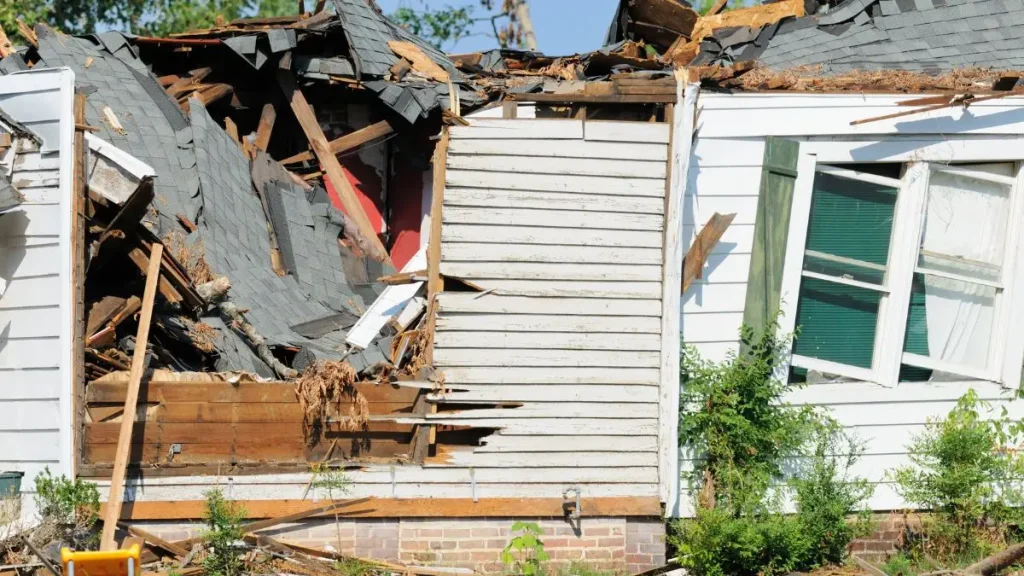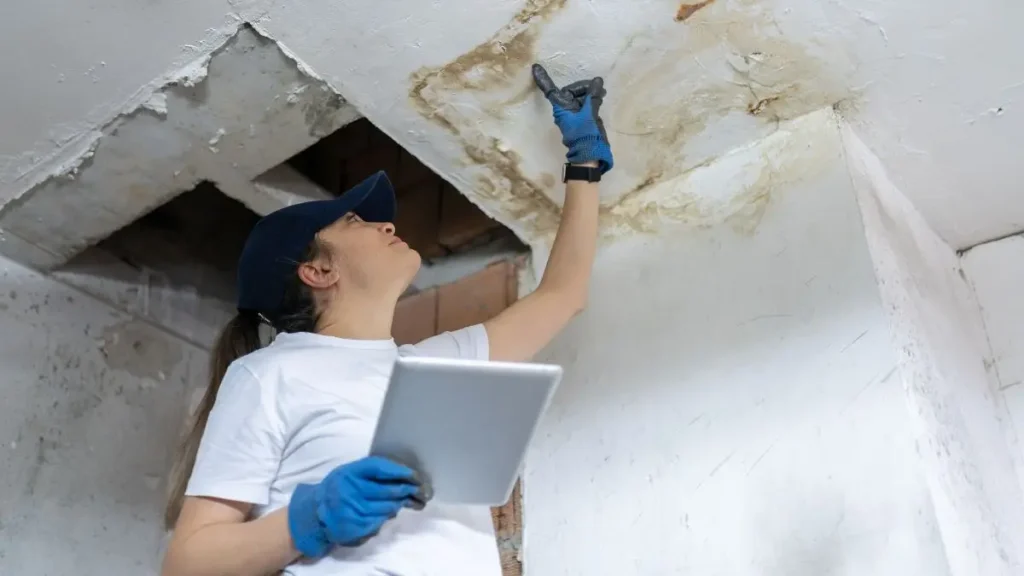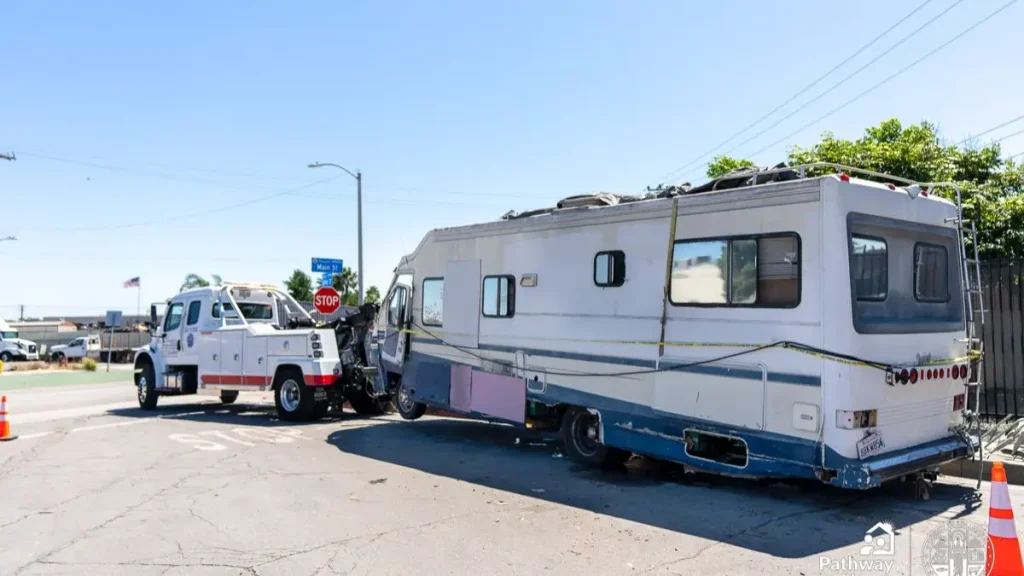Lincoln Home Struck by Lightning, Attic Catches Fire Around Midnight
I can’t imagine the shock of waking up to smoke in your home—especially when it’s pitch black outside and a storm is raging overhead.
That’s exactly what happened around 12:20 a.m. on Thursday in South Lincoln, near Speidel and San Mateo Lane. A powerful thunderstorm was rolling through the area when lightning struck the center of a house’s roof, setting off a chain of events that would displace a family and leave behind tens of thousands in damage.
Lincoln Fire & Rescue arrived quickly. From the outside, it didn’t look like much—just a bit of smoke rising from the roof. But once they went inside, they found what most of us would never expect: a small but dangerous fire slowly growing in the attic.
Even though crews put it out within 15 minutes, the damage had already begun. The roof was scorched, the attic charred, and rain from the storm was pouring in. The homeowners were safe, thankfully—but their night turned into something no one plans for.
Have you ever experienced a lightning strike nearby or during a storm? What precautions do you usually take when bad weather rolls in?
Inside the Fire: What Lincoln Fire & Rescue Found
When I read the report, one thing stood out: how fast everything unfolded.
According to local report, Lincoln Fire & Rescue got the call just after 12:20 a.m. They responded to a house near Speidel and San Mateo Lane—right in the heart of South Lincoln. When crews arrived, there wasn’t a blazing inferno or flames shooting out of windows. It was subtle. Just light smoke starting to fill the air.
That’s the scary part. You and I often think a fire always looks dramatic, but this one didn’t—at least not yet.
Firefighters entered the home and found the source: a small fire creeping through the attic. Left unnoticed, it could’ve easily turned into something far worse. This wasn’t just about flames—it was also about timing. If the family had been asleep longer or if help had arrived later, this could have ended very differently.
It makes me wonder: would I even know if a fire started in my attic while I was sleeping?
A similar attic fire in Indiana left a resident with minor injuries earlier this year — even when it seemed under control at first.
Estimated $50K in Damage—Here’s What Caused It

Now here’s where things hit hard—not just emotionally, but financially.
According to KLIN, the lightning didn’t just spark the fire. It tore open the roof and damaged the attic, and once the rain came pouring in, water soaked through parts of the home. That’s where the $50,000 in damage really adds up—not just from the flames, but the storm itself.
Even though firefighters tried to tarp the roof and protect the interior, you can only do so much in a downpour.
Imagine being that family. You’re safe, thankfully, but your home’s roof is torn up, your attic smells like smoke, and your belongings are waterlogged. You’re trying to figure out insurance, find a place to stay, and salvage whatever you can—all while the storm is still passing overhead.
That’s not just costly. That’s emotionally brutal.
Have you ever dealt with storm damage or a home emergency like this? Drop your thoughts or stories in the comments — I’d love to hear how others handled it.
Why Lightning Fires Start in Roofs and Attics?
I used to think lightning fires were rare. But turns out, your attic might be one of the most vulnerable spots during a storm.
Here’s why: when lightning strikes a house, it often travels through the highest, most conductive parts of the structure—like metal flashing, vents, or even chimney caps. That’s where your attic comes in. It’s usually filled with dry wood, insulation, and wiring. Combine that with a direct lightning bolt carrying over 30,000 amps? You’ve got the perfect ignition source.
Most attic fires don’t explode instantly. They smolder. And that makes them harder to notice—especially in the middle of the night.
According to data from the National Fire Protection Association (NFPA), there are hundreds of lightning-related house fires in the U.S. every year. And while the number may sound small, the damage—and the risk to families like yours and mine—is very real.
That’s why it’s not enough to just ride out a thunderstorm inside. You need to be aware of what’s happening above you.
Lately, I’ve been keeping an eye on local fire alerts and safety reports through a WhatsApp channel that shares quick updates during storms — it’s helped me stay more alert in real time without constantly refreshing the news.
What to Do If Lightning Strikes Your Home?
If you’re anything like me, storms probably make you nervous—but not panic mode nervous. After reading about this fire, though, I’ve changed how I think about lightning safety.
Here’s what you should do immediately if lightning ever strikes your home:
- Get out and call 911. Even if you don’t see flames, don’t take chances. Fires can start behind walls or in the attic where you won’t see them right away.
- Don’t touch metal or plumbing. Lightning can travel through pipes, wires, and anything conductive.
- Wait for the fire department to clear the house. You might feel tempted to go back in and “check things out,” but that’s a huge risk. Smoldering fires can reignite.
You never think your home will be the one—until it is. And trust me, prevention is great. But knowing what to do in the moment is what can truly save your life.
On the coast, a fire in Tybee Island during severe weather sent one person to the hospital, reminding us that location doesn’t guarantee safety.
How to Protect Your Home from Lightning Damage?

I’ll be honest — I never thought much about lightning protection until I saw how fast this fire in South Lincoln escalated.
Most homes, including mine, don’t have a lightning rod system. But after seeing this? I’m rethinking that.
Here’s what I found while digging into fire prevention tips you and I can actually use:
- Install a lightning protection system. That means rods, conductors, and grounding — it channels the strike safely into the ground instead of letting it explode through your attic.
- Use surge protectors — everywhere. Not just on your computer. Lightning can fry your TV, fridge, HVAC — and yes, even cause a fire if it surges into faulty wiring.
- Get your roof and attic wiring inspected. Especially if your home’s over 10–15 years old. One damaged wire in the attic can turn deadly with a single bolt.
According to the Insurance Institute for Business & Home Safety, these upgrades don’t just lower your risk — they can reduce your insurance premiums too.
So, if storms are common in your area, this isn’t overkill. It’s just being smart.
Sadly, not every fire has a safe outcome — like the overnight blaze in St. Louis that left one man dead before anyone could respond.
Insurance and Repairs: What Happens After a Fire
After a fire — even a small one — your whole world turns upside down. I’ve worked with people dealing with house fires before, and let me tell you: the insurance side can be just as stressful as the fire itself.
Here’s what you should do immediately if you ever face something like this:
- Call your insurance provider right away. Don’t wait. Document everything — photos of the roof, attic, water damage, even the tarp.
- Ask about temporary housing assistance. Most homeowner policies include coverage for hotel stays or short-term rentals if your home is unlivable.
- Be wary of “storm chaser” contractors. After an event like this, some shady repair crews roll in offering fast fixes. Always go with licensed, local professionals.
- Request a full inspection — not just roof and attic. Fire and water damage can seep into wiring, drywall, insulation. You need a full picture before rebuilding.
If this were my home, I’d want someone to walk me through every single step — because let’s face it, the stress alone makes it hard to think clearly.
Final Word
If there’s one thing I took away from this fire, it’s that lightning doesn’t care how prepared you feel. It only takes one strike.
The family in South Lincoln did nothing wrong. They were just in the path of nature — and thankfully, they got out safe. But $50,000 in damage, a torn-up roof, and a night spent in uncertainty? That’s the kind of disruption I don’t wish on anyone.
So if you’re reading this and thinking, “This could never happen to me,”—I hear you. I used to think the same.
But storms are changing. Weather is getting more unpredictable. And being ready isn’t about fear — it’s about peace of mind.
If you’re interested in more real-life home incidents and safety tips, visit our full Home Incidents section.
Disclaimer: This article is based on publicly available reports and official statements at the time of publishing. Details may evolve as more information is released. Always consult local authorities or professionals for safety and insurance guidance.


